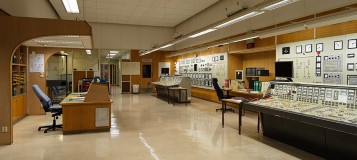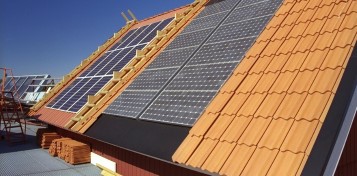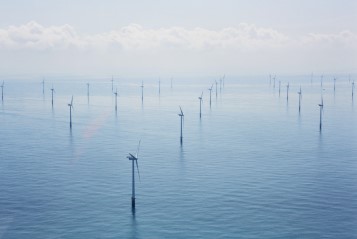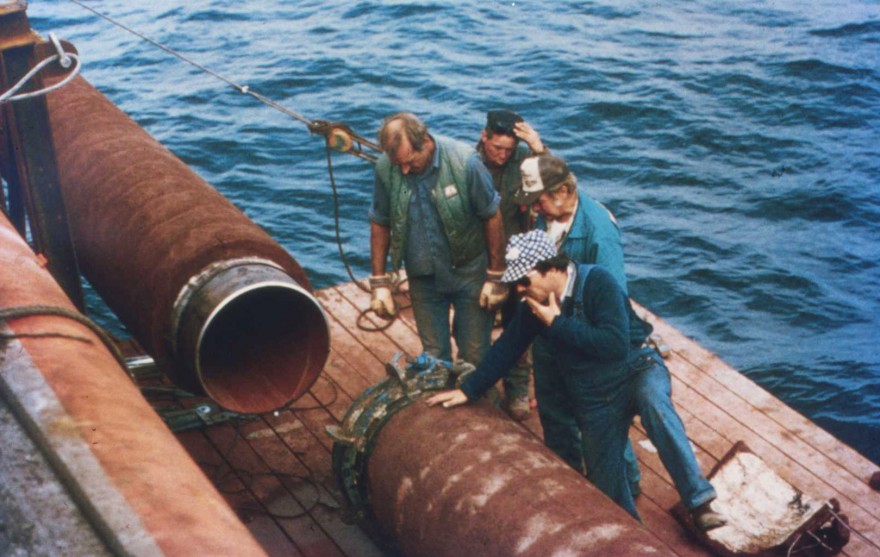
Fossil fuels on and off the agenda
When Vattenfall realised in the mid 1950s that the expansion of hydropower was coming to an end, the company started looking at alternative ways of producing electricity. The main candidates were initially oil and nuclear power. But the oil crises of 1973 and 1979, and the nuclear phase-out decision in 1980, upset everything.
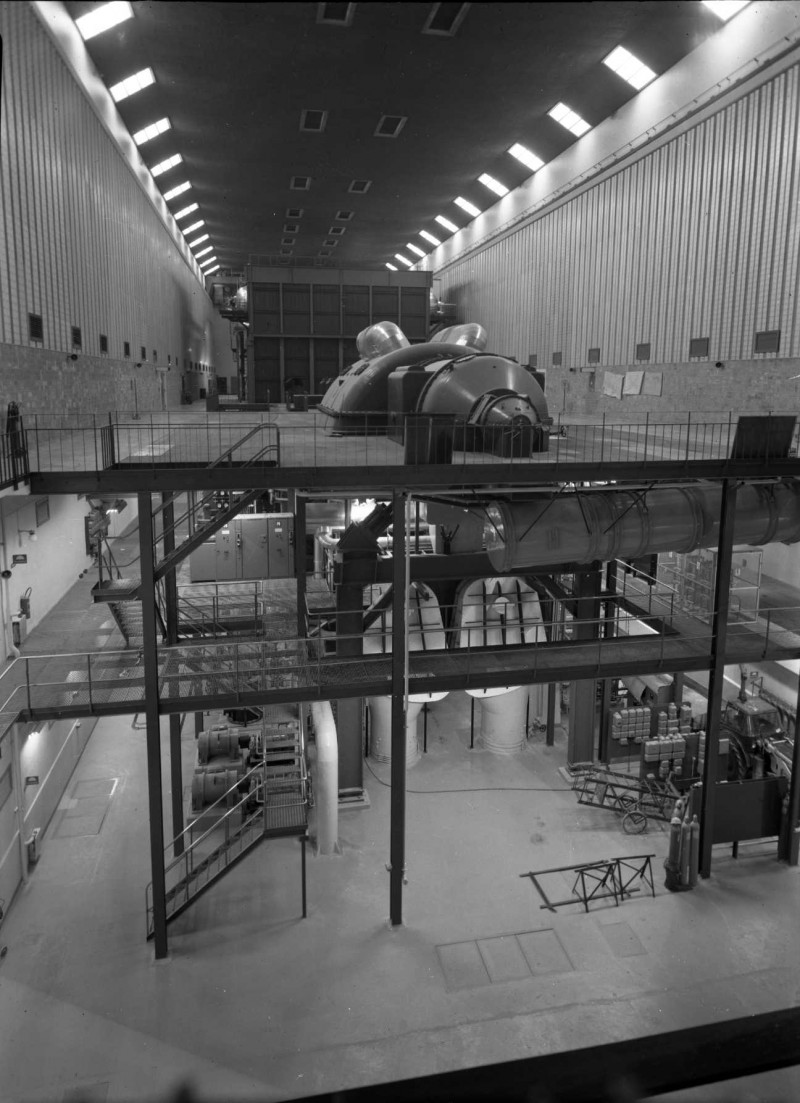
Stenungsund power plant. Year: 1959 | Place: Stenungsund | Creator: Vattenfall | ID: VF000049
In the mid-1950s Vattenfall realised that hydropower would be almost fully developed in Sweden within a few decades. The company then sought new ways to meet the steadily increasing demand for energy. Electricity consumption was increasing by 7 percent annually, implying a doubling of capacity every ten years. Atomic power attracted a lot of interest, but this was not the only source of energy Vattenfall experimented with. During the 1960s, oil was cheap and was seen as a natural complement to hydropower. Vattenfall, despite the name (which means waterfall in Swedish), commissioned, for example, Stenungsund in the 1960’s and several oil-fired combined heat and power plants together with partners in large towns such as Norrköping in 1972 and Uppsala in 1974. Oil-fired district heating plants were now being built in the cities at a brisk pace. Dependence on oil was not seen as a major problem, although the Swedish Fuel Commission highlighted the dangers as early as 1953.
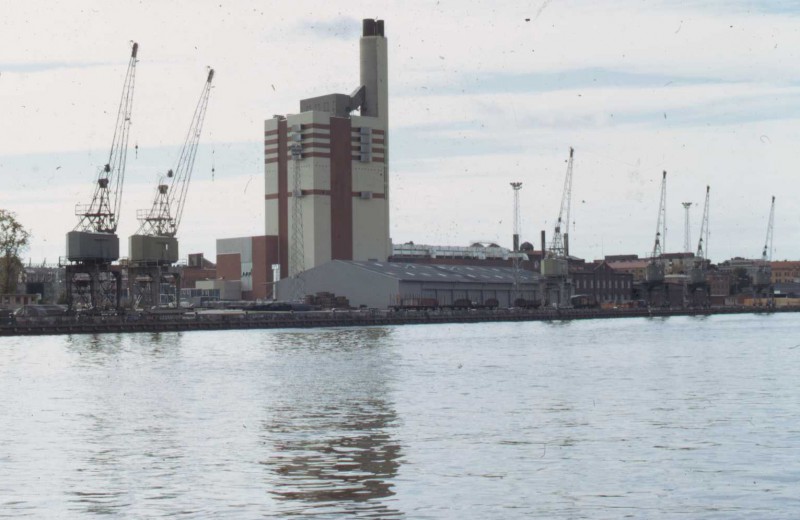
Norrköping combined heat and power plant. Year: 1973 | Place: Norrköping | Creator: Ivan Christoferson | ID: VF000050
This would change radically in the oil crisis of 1973. The price of oil quadrupled in one year. Reduced oil consumption was now at the very top of the political and economic agenda. During a second oil crisis, in 1979, the price of oil tripled. Vattenfall, as a state company, was now given a larger role in this issue by its owner. For a number of years Vattenfall came to be involved in, and a leading player within, Swedish energy and industrial policy. In the mid 1970s nuclear power, previously an area of great confidence, began to be questioned. After the Swedish referendum on nuclear power in 1980, Vattenfall was again given a commission by its owner, the Swedish state. It was now to lead Sweden out of the nuclear power society. In 1988, the Swedish parliament decided that two nuclear reactors should be decommissioned, in 1995 and 1996 respectively, so it was very important to develop alternatives quickly.

Siljansringen. The impact site from a meteorite that hit the earth more than 370 million years ago. Year: 1984 | Place: - | Creator: Bengt Johansson | ID: VF000055
As the potential of renewable energy sources was undoubtedly huge, but far in the future, Vattenfall also looked at various fossil fuels such as coal and natural gas. Vattenfall carried out an extensive study on coal, health and the environment on behalf of the government between 1979 and 1983. Similar studies into natural gas, peat and other sources were also completed. These studies produced comparatively reassuring results. A large number of potential facilities were examined by Vattenfall, such as gas-fired power plants at Lingome (Ringhals) and Stallbacka, coal at Oxelösund and Nynäshamn and so-called 'residual oils' at Brofjorden. But the tripartite agreement on energy policy in 1991 abolished the decommissioning dates of 1995 and 1996, and matters were no longer as urgent.
Video player requires marketing cookies.
To view this content please click here to allow marketing cookies.
Plans for natural gas in Sweden in 1988 (in Swedish)
Extensive plans for natural gas
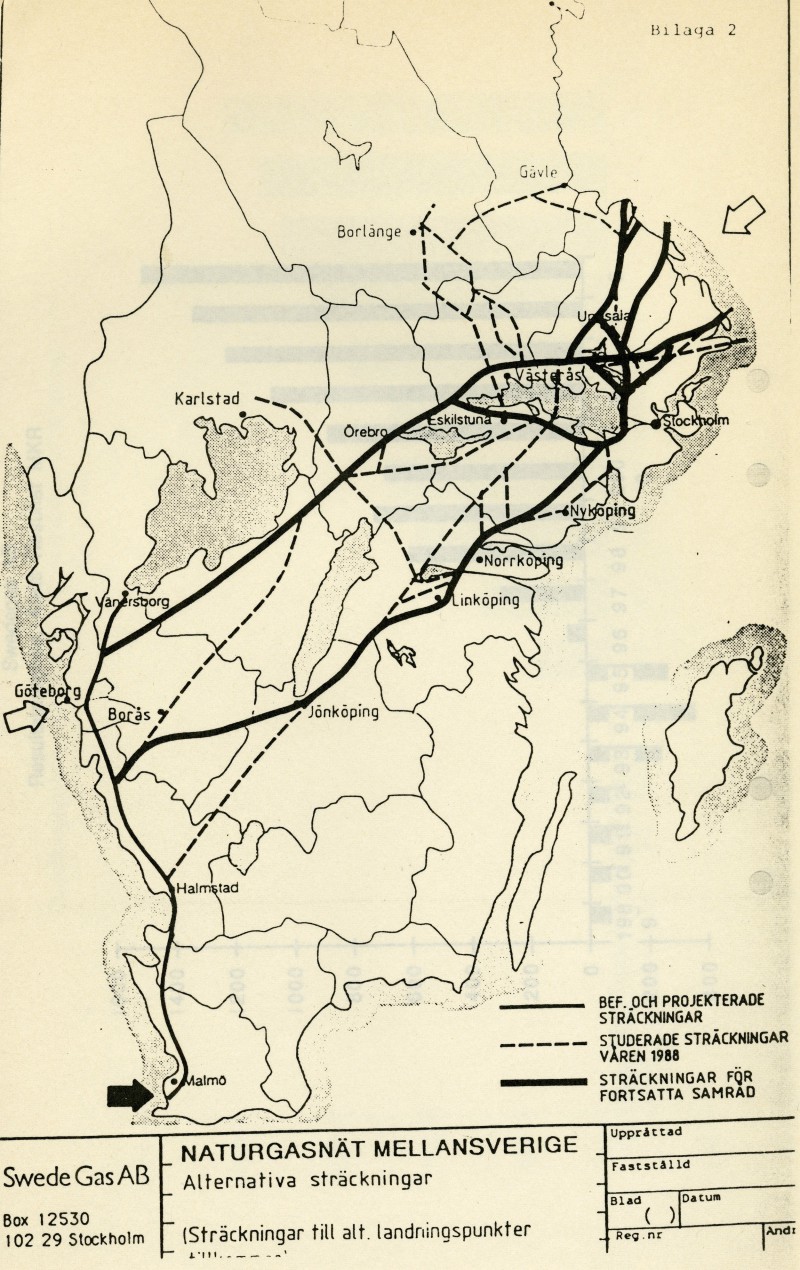
Planned expansion of natural gas in Sweden in 1988. From the report 'Vidare utbyggnad av naturgas i Sverige', made for Vattenfall's board. Year: 1988 | Place: - | Creator: Okänd | ID: VF001003
Natural gas was considered a clean and environmentally-friendly source of energy. The history of the Swedegas company started in 1976 when the then government decided to introduce natural gas to the Swedish market. The company was at times wholly owned by Vattenfall. In 1980, the Swedish and Danish government signed an agreement on natural gas cooperation. Denmark was to export natural gas to Sweden. Five years later, in 1985, the first stage of the gas grid, from Dragör to Helsingborg, was ready, and Sweden received its first delivery of natural gas.
The grid was gradually expanded and by 1988 it reached all the way to Gothenburg. In 2004, the final stage of what constitutes today's gas grid was completed – north to the chemical industrial companies in Stenungsund, Bohuslän.
When Vattenfall expanded into Germany in the early 2000s, Vattenfall relinquished Swedegas. After over 25 years as one of the key players in the construction of a natural gas market in Sweden, Vattenfall was now completely without gas in its portfolio. With the acquisition of the Dutch company Nuon in 2009, Vattenfall again had natural gas as part of its energy mix.
During the 1980s and 1990s, Vattenfall was involved in several projects which it was hoped would give natural gas a major role in Sweden's energy supply. The most spectacular was perhaps Dala Djupgas. The project was based on theories that large quantities of gas were available from a meteorite that hit the earth more than 370 million years ago. The impact site, the so-called 'Siljansringen', was Europe's largest impact crater. Vattenfall decided to investigate the matter, and carried out exploratory drilling in 1986. Three years later a depth of 6,770 metres had been reached. No commercial quantities of gas were ever found and Vattenfall eventually withdrew from the project.

'The deep gas project: Siljansringen'. The cover of a report published about Vattenfall's deep gas project. Year: 1985 | Place: - | Creator: Okänd | ID: VF001009

The deep gas theory. From the brochure 'Deep gas drilling in Gravberg'. Year: - | Place: - | Creator: Okänd | ID: VF001019

